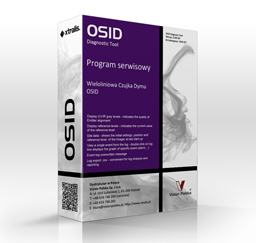Plugging your PC into the Imager's serial port and using the OSID Diagnostic Tool offers the Service Engineer in-depth and visual information to diagnose fault conditions.
Imagers equipped with firmware from V4 onwards have an on-board memory that contains, stored on FIFO basis, all alarms and faults in the system as well as all significant changes in the system. Significant changes include IR/UV signal variations, even those that have not led to an alarm, Emitter position changes and temperature changes.
On site, when connecting your PC via the FTDI cable make sure not to switch off the power supply to the Imager. The Imager memory is storing events with a counter because there is no real time clock available in the Imager.
When connecting the PC, the program will use the PC's time and date to create a timeline for the stored events. Verify that your PC has the correct time and date before connecting.
If the Imager was powered down the events will be presented as data points over a scale that reflects parts of a day. You will have all events and the period these lasted but without time and date stamp. In this case you can (try to) correlate the events to the events in the FCAP log and estimate the time line in this way.
Program dostarczany jest tylo w wersji elektornicznej. Opakowanie na zdjęciu jest tylko poglądowe i stanowi element marketingowy.
Podstawowe cechy
-
This analytic software is unique in the smoke beam detector industry and has numerous extra features:
- Display UV/IR grey levels - indicates the quality of Emitter alignment.
- Display reference levels - indicates the current value of the reference level
- Site data - shows the initial settings, position and reference level, of the Imager at last start up
- View a single event from the log - double click on log line displays the graph of specific event (alarm,...)
- Event log overwritten message
- Log export .csv - convenient for log analysis and reporting

